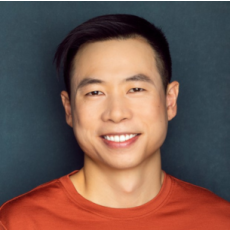Gorick Ng is a career advisor at Harvard University, a Wall Street Journal bestselling author of The Unspoken Rules, and a keynote speaker at many Fortune 500 companies.
Could you tell us a bit about yourself and about what got you passionate about career counselling?
My work has given me insight into what this new generation of talent is feeling, thinking, and doing. I am the proud son of a working-class single mom who left school when she was 12 years old. I was the first in my family to graduate high school and go on to college—and was fortunate enough to make it to Harvard.
That’s when I realized just how different my upbringing was compared to those of my peers. I was surrounded by the children of CEOs, politicians, doctors, and lawyers who grew up with dinnertime conversations about careers that I was never exposed to. I can still remember aimlessly roaming around at career fairs collecting all the free swag not realizing that my peers were spending their time saying the right things to the right people—and, as a result, walking away with coffee chats, interviews, and, eventually internship offers. Eventually, I emulated those unspoken strategies and landed similar jobs—only to realize when I arrived in a corporate setting that the unspoken rules had only just begun. While others were getting pulled into closed-door meetings and high-profile projects, here I was still waiting for my first assignment.
You mentioned that even people at the cusp of becoming CEOs struggle with what you call the unspoken rules. To what extent is it the employer’s responsibility to help these professionals understand these rules and realize their potential?
There’s self-help, and there’s institutional help. My book, The Unspoken Rules, is about demystifying the unknown unknowns of work—how to introduce yourself, take initiative, ask questions, manage up, demonstrate an ownership mindset, and more. Someone has to whisper these rules into our ears. These behaviors aren’t innate—they’re learned, through peers, mentors, or sponsors. Some people learn them early. Others never do—and so keep stumbling without ever knowing why.
Every company wants to attract great talent, engage them, and develop a strong bench of future leaders. Yet many organizations face a succession crisis: they’re unsure who their next leaders will be. Often, they overlook internal talent and go external because their workforce hasn’t been developed enough to show its potential. There are unspoken rules at every level: for individual contributors, middle managers, and senior leaders. Helping talent navigate each stage—and learning how to think like an owner (in the case of individual contributors), manage up, down, and all around (in the case of middle managers), and think strategically (in the case of senior leaders)—can do wonders in boosting employee retention and productivity.
Gen Z talent has different workplace expectations and is known to be difficult to retain. What advice would you give to employers trying to keep this generation engaged?
It’s common to label Gen Z as disengaged or entitled, but every generation has said the same about the one that follows. Gen Z has come of age in uncertain times—pandemics, rescinded job offers, economic instability. What we may observe as disengagement is really a more holistic view of how work ought to fit into our lives. When I survey students, they often define career success not as climbing the corporate ladder but as having good work-life balance, being financially stable, doing meaningful work, building strong relationships, or making an impact.
Many Gen Z workers are not seeking promotions or management roles, and this baffles older generations. Leaders need to ask junior talent: what brought you here, and what do you hope to gain? Then tailor the experience to support their goals. Some may want growth while others value stability. The better you understand the motivations of your workforce—and whether they see their jobs as a stepping stone, a temporary role, or a forever job—the better you’ll be at meeting their expectations and engaging them.
You mentioned a framework to help understand employee motivations. Could you explain that in more detail?
Yes, I see four types of jobs among early career talent: sustenance, transition, hypothesis-testing, and career-building. Sustenance jobs are about survival—paying loans, getting visas. Transition jobs help people build skills and networks or move between sectors or functions. Hypothesis-testing jobs are about self-discovery—figuring out what one wants. And career-building jobs are about progressing in a chosen path.
Meanwhile, leaders hire to achieve one of three goals: to develop a bench of future leaders, to add a brick to the organizational foundation, or to a plug occasional gap. Misalignment happens when leaders expect long-term commitment, but the employee sees the role as short-term—or vice versa. If you want to make the most of the people you worked so hard to hire, you need to understand how your people view their role—and align their goals with your organization’s needs.
What role does communication play in bridging the generational gap and reshaping how industries present themselves to talent?
Corporate communication is no longer about writing press releases. It’s about educating—about telling a story. There are two types of employers out there: Employers of choice and employers of convenience. When I poll students and early career professionals on their dream employers, the names that get mentioned are always the usual suspects: it’s the biggest, hottest brands they’re exposed to as students. These are the employers of choice. What about the other 99.9% of companies out there? They’re employers of convenience—but who have the potential to become employers of choice. Many of these employers need to educate the public on what they do and why they’re relevant. Other industries like oil and gas, mining, pharma, and banking have a lot of work to do to dispel the myths and to rebrand themselves.
What is the importance of lifelong learning for the future of work—and how can individuals and leaders prepare for it in the age of AI?
If you want to stay relevant and to not be left behind, you have to be a lifelong learner. In school, others dictate what we learn and when. But after graduation, the conveyor belt ends—and we need to become our own professors in the school of life. This means being on top of the latest headlines, knowing the latest trends, and being familiar with the latest tools and technologies.
AI may not yet rival your top employees, but it is already outperforming your average intern. Jobs most vulnerable to automation are routine, rule-based ones that can be reduced down to an “if… then…” statement. That means people must focus on strategic, creative, and relationship building work that AI either cannot do yet or that we don’t yet want AI to do. This applies to leaders, too. If they stop learning about what their workforce needs and wants, their people will disengage. And early signs of disengagement appear fast: my data shows 90% of young workers decide whether they’re in an organization they could see themselves staying in long-term within the first three months. A third decide by day seven.
How can organizations improve onboarding and long-term development to retain their workforce in this new environment?
Employee engagement starts before day one. In the period between when the job offer arrives and one’s first day, employees are wondering what to expect and how to succeed. This is a great chance to share resources and set expectations. Then, between day one and week one, it’s time to shift the focus of onboarding from badges and laptops to the unspoken rules of building relationships, managing up, navigating workplace dynamics, and succeeding in a hybrid environment.
Long-term, it’s time to shift the focus from employee retention to employee engagement. Companies must do more to not just keep their talent, but to develop them into future leaders. Few do this well, so no wonder so many organizations are having a leadership succession crisis.
Do you think AI could hinder learning by making people too reliant?
On the one hand, AI can accelerate learning if used wisely. On the other, it can weaken our understanding if we rely on it to the point of not knowing how things work or where certain pieces of information are coming from. Developers, for instance, sometimes do not understand a codebase because they didn’t write it—AI did. What happens if something breaks?
It’s important to shift the focus of our education system from rote memorization to problem solving. Students are entering the workforce sounding like ChatGPT because their essays were written by ChatGPT. The most successful students and professionals know that AI can make them more effective. I worry about all the people who are outsourcing so much of their brains to AI that they soon don’t have a mind of their own.





